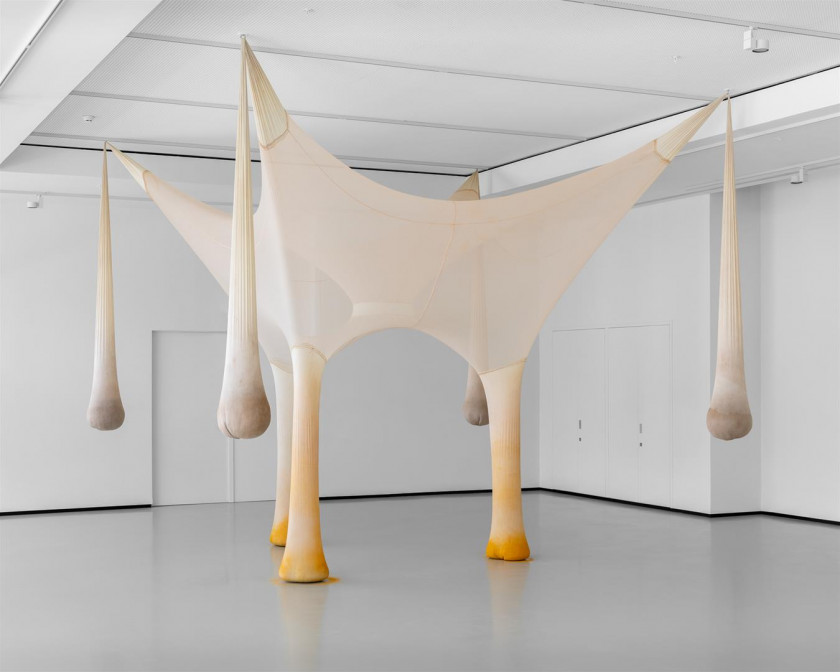Arquitetura Animal [Animal Architecture]
installation


2001
Polyamide fabric, powdered clove and saffron
360 x 480 x 510 cm (aprox.)
Ernesto Neto, one of the most renowned Brazilian artists, is known worldwide for his enormous three-dimensional works, somewhere between sculpture and installation in an irreverent formal and symbolic articulation of various materials. Animal Architecture is the title given to large dimension sculptures and organic shapes representative of Neto’s work from the second half of the nineties onwards, the appearance of which seems to lead to the analogy between body and architecture in the relation to the spectator’s experience and the invasion of the exhibitory space. In this work, the sinuous shapes made with the suspension and dilatation of several metres of polyamide fabric, extending and appropriating the space by the imprisonment of four points in the ceiling, seem to recreate living organisms or suggestions of the interior of the human body, or skin itself. These equidistant extensions vertically disposed and oriented to the floor have, in their extremities, pouches created by the filling with powder spices, clove and saffron, and by the weight they represent in the whole work. Disposed in a total of seven suspended pouches, four in the extremities (clove powder) and three in the centre (saffron powder), these translate the spatial and architectural reconfiguration, now serving the spectator’s sensorial and synesthetic experience – both individually, by inhabiting the created space, or as the whole interaction and multi-subjectivity of various simultaneous visitors. Thus, this work, admitting the crossover and complex inter-influence between sculpture, installation, and architecture, was designed to be crossed, occupied and felt, greatly awakening and animating the sight, touch and olfactory senses. Like an intimate, immersive, meditative and regressive encounter, appealing simultaneously to bodily involvement and reflection about the strength and fragility of the world, that seems to lie in the potential transcendence of the direct and linear perception of the artwork.
Carolina Quintela